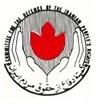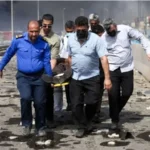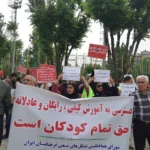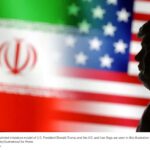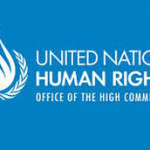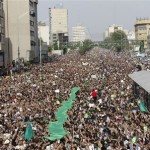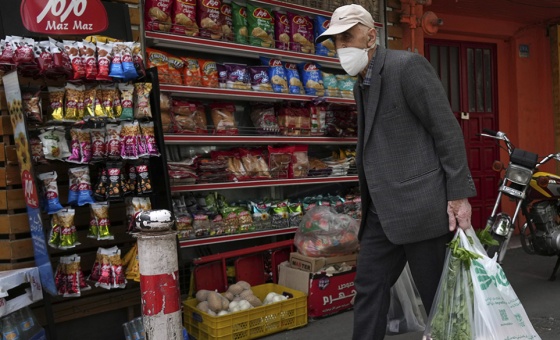
Recent protests over food prices in Iran are the latest in a series of protests in the Islamic Republic. JANE GREEN assesses the present upsurge in opposition to the regime.
The current protests in Iran are the latest in a wave of significant protests and uprisings in recent years. In December 2017 demonstrations against the regime lasted into January 2018, spreading to well over 100 cities and towns across the country. Anti-government slogans were a key feature of the protests, unusual in a society as tightly controlled as Iran, and included “death to the dictator”, being Supreme Leader, Ali Khamenei, and “death to Rouhani,” the regime’s so-called reformist president, at that time.
Further protests followed in November 2019, after the announcement of gasoline price hikes. This came at a time when unemployment, poverty and inflation were having a major impact following the intensification of US sanctions. Opposition erupted in nearly 200 cities and towns with protesters once again calling for the removal of the government and an end to its corrupt practices.
The uprising in November 2019 lasted for several days, even though protest was sustained under gunfire from security forces and the Islamic Revolution Guard Corps (IRGC). A subsequent Amnesty International report, issued in the wake of the unrest, confirmed that the IRGC had been shooting to kill. A later report noted that months of torture had awaited many of the thousands of arrested individuals during the uprising.
Recent protests have taken place in various cities of Iran due to rising food prices and shortages of certain foodstuffs. Footage posted on social media shows security forces responding with tear gas against demonstrators chanting slogans against the country’s rulers and government, even opening fire to disperse crowds in the towns of Borujerd and Farsan in Lorestan province.
The protests follow a statement by Iranian President Raisi, who announced on 9 May that, as part of the fight against the economic crisis, subsidies for essential goods would end.
While in his statement Raisi said that prices for traditional Iranian bread, medicines and gasoline would not change, reports indicate that the price of bread has increased by up to three times. The prices of butter, eggs and chicken have almost quadrupled in the country, with widespread shortages of many other basic foods being reported.
Hundreds of Iranians are reported to have waited in long lines to stock up on food. Supermarket shelves across the country were emptied as people went into panic buying mode in the hours before the price hike took effect. Such scenes underline the deep anxiety gripping much of the population in Iran and reflect the ongoing frustration with Iran’s leaders.
The Iranian regime has taken its usual steps to suppress information about the protests by closing down internet access in many areas and made a number of arrests in the affected areas.
The war in Ukraine is having an impact on food prices across the Middle East, which have surged due to global supply chain issues. Both Russia and Ukraine export many essentials to the region. Iran imports half of its cooking oil from Ukraine, for example, where fighting has kept many farmers from the fields. Although Iran produces roughly half of its own wheat, it imports much of the rest from Russia. The war has added to inflationary pressures.
The price of wheat on the global market has jumped since the start of the Russian conflict with Ukraine, adding to the cost of subsidies. Russia and Ukraine account for about 30 per cent of Iran’s grain imports.
The situation inside Iran itself is compounded by drought conditions, which are ravaging the country’s economy. Western sanctions over Iran’s nuclear deal have caused additional difficulties. Inflation has soared to nearly 40%, the highest level since 1994. Youth unemployment also remains high. It is estimated that around 30% of Iranian households are living below the poverty line. Iranian families have seen the value of their earnings and, as a result, their purchasing power rapidly diminish.
In spite of this government supporters have tried to defend the price hike claiming that they are “necessary economic surgery” as part of a parliament-approved reform package. Some social media users have ridiculed the term, saying officials have removed the patient’s heart instead of the tumour. Videos have even surfaced on social media in recent days of Iranians gathering in the streets of the southern Khuzestan province, chanting slogans against price hikes and against the country’s leaders. Iranian state media has not publicly addressed the protests.
Iranian President Ebrahim Raisi has promised to create jobs, lift sanctions and rescue the economy, promising economic growth of 8 per cent this year. However, talks in Vienna to revive Iran’s tattered nuclear deal with world powers, the Joint Comprehensive Plan of Action (JCPOA) had, until recently, been deadlocked for some time.
The rise in global oil prices and China’s emergence as a buyer of Iranian crude have helped Tehran withstand the impact of economic sanctions imposed by the US after former president Donald Trump abandoned the nuclear deal in 2018.
The Biden administration has been holding indirect talks, mediated by the EU, with Iran for about a year in the hope of securing an agreement that would lead to Iran reducing its nuclear activity. In return, the US would rejoin the JCPOA and lift sanctions. The talks in Vienna have stalled since March. One sticking point is the insistence of Iran that the US to remove its Islamic Revolution Guard Corps (IRGC), designated by the US as a foreign terrorist organisation, from the sanctions list.
Some hope of an opening in negotiations was revived recently when on 11 May, Enrique Mora, the European Coordinator for the Vienna Nuclear Talks, met with Ali Bagheri, Tehran’s chief negotiator, at the Iranian Foreign Ministry. The Iranian Foreign Ministry spokesman said that the Iranian negotiating team would meet with Mora in Tehran with a “clear agenda.”
Earlier, US State Department spokesman Ned Price announced his support for Mora’s visit to Tehran, saying that Washington was in close contact with Mora. Prior to Mora’s visit to Tehran, the Financial Times reported that the European Union was seeking a solution to the IRGC issue, potentially removing the IRGC from the terrorist list, but parts of it, such as the IRGC’s Quds Force, remaining on the list.
EU foreign policy chief Joseph Borrell told reporters last Friday: “To put it bluntly, the negotiations have reached a stalemate and now the stalemate has been resolved, so there is a prospect of reaching an agreement.”
The Iranian government’s hard-line approach on price rises may be a response to the fear that negotiations in Vienna could still end in failure. Before the war in Ukraine most analysts had predicted that the accord would be signed. However, Iran’s support for the Russian stance has not gone down well in London and Washington.
On the one hand Western leaders have calculated that Iran is not showing any willingness to drop its reliance on Russia and China. As far as Iranian theocracy is concerned, they are not convinced that Washington and London will play ball, with NATO’s toppling of the regime in Libya being referred to as an example.
As ever, the actions of the corrupt Islamic regime in Tehran, combined with the devastating impact of international sanctions, are hitting the working people of Iran the hardest. Protests continue against the regime and, until the fate of the Iranian people is in their own hands, will continue to gather momentum.

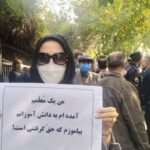
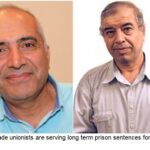
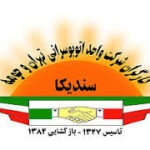


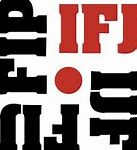



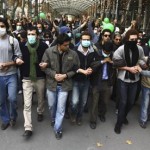
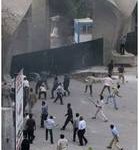
 Posted in
Posted in 